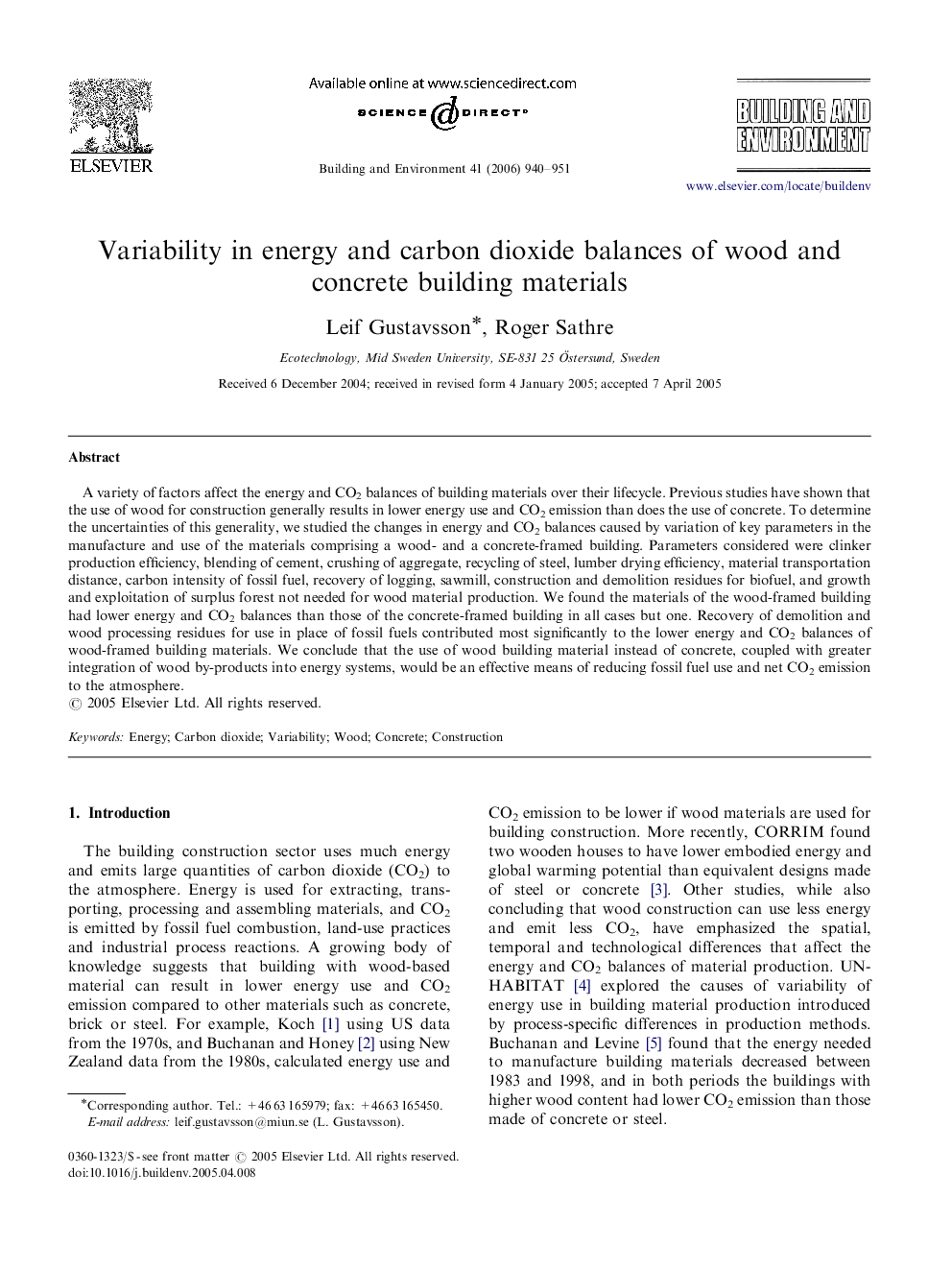| کد مقاله | کد نشریه | سال انتشار | مقاله انگلیسی | نسخه تمام متن |
|---|---|---|---|---|
| 250384 | 502665 | 2006 | 12 صفحه PDF | دانلود رایگان |

A variety of factors affect the energy and CO2 balances of building materials over their lifecycle. Previous studies have shown that the use of wood for construction generally results in lower energy use and CO2 emission than does the use of concrete. To determine the uncertainties of this generality, we studied the changes in energy and CO2 balances caused by variation of key parameters in the manufacture and use of the materials comprising a wood- and a concrete-framed building. Parameters considered were clinker production efficiency, blending of cement, crushing of aggregate, recycling of steel, lumber drying efficiency, material transportation distance, carbon intensity of fossil fuel, recovery of logging, sawmill, construction and demolition residues for biofuel, and growth and exploitation of surplus forest not needed for wood material production. We found the materials of the wood-framed building had lower energy and CO2 balances than those of the concrete-framed building in all cases but one. Recovery of demolition and wood processing residues for use in place of fossil fuels contributed most significantly to the lower energy and CO2 balances of wood-framed building materials. We conclude that the use of wood building material instead of concrete, coupled with greater integration of wood by-products into energy systems, would be an effective means of reducing fossil fuel use and net CO2 emission to the atmosphere.
Journal: Building and Environment - Volume 41, Issue 7, July 2006, Pages 940–951